Lecture to Oceanic Art Society, Sydney, 20 June 2016.
Report by Robin Hodgson
On Monday 20 June 2016, in the Annexe of the Australian Museum, our visiting lecturer, Mark Blackburn from Hawaii, gave us a fast-paced look at his life as an exuberant explorer, enterprising protector and dedicated exponent of ancient and modern Polynesian art and culture. The event attracted interstate members and a number of Tongan language students living in Sydney.
Mark began by acknowledging people of note who have encouraged, mentored and befriended him along his journey, including Donald Stanley Marshall, Bengt Danielsson, Thor Heyerdahl, Roger Neich, Adrienne Kaeppler, David Simmons, Terence Barrow, Georgia Lee and Jo Ann Van Tilburg.
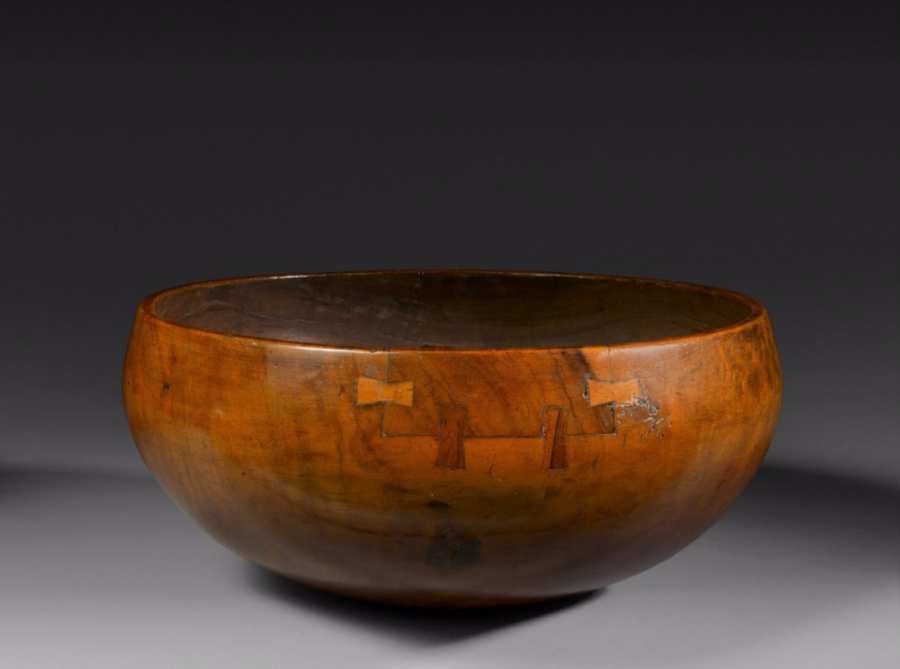
He described the state of the market for Polynesian artefacts as being disturbed, with major auction houses acting as the transactional pathway between these objects and the current plutocracy. The average collector is distanced by the unrealistically high prices attached to trophy objects. $1.4 million was paid recently for a rare Rurutu chief’s stool, although an object of extremely high quality and a masterpiece, does it warrant such a high price for a piece of Polynesian furniture? Another example cited was an Hawaiian calabash or bowl worth $7,000 or so, which sold for $85,000 – it was a lovely shape – to the late Sheikh Saud bin Mohammed Al-Thani. The new exaggerated and speculative prices have left the majority of collectors and dealers priced out of the market.
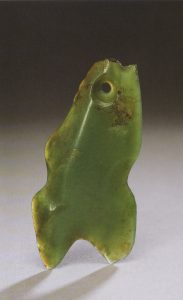
He next discussed how Polynesian wooden artefacts are often dated to the 18th century at the earliest, yet they go back to at least the 16th century, as is shown by the recent wood testing of the famous A’a god figure at the British Museum. It shows a date of 16th century or before. Interestingly this figure, given by Rurutu islanders to the London Missionary Society in the 1820s, is carved from sandalwood, which is not native to Rurutu.
Mark talked about two of the major market disrupters of the last couple decades. The first was the late Sheikh Saud bin Mohammed Al-Thani who had an amazing eye, but was inconsistent in paying for his purchases. He once acquired an entire auction of ancient Greek coins and never paid for it. He would spend hundreds of millions of dollars in different areas, “acting like a giant sucking machine” in the market place. The second was Bill Ziff, an American publishing mogul who had a great eye, always paid, and was active in many areas of collecting. He formed the most important Pre-Columbian collection in the world.
Mark then discussed manufactured or “trade” artefacts made for the purpose of selling to early voyagers and visitors, including both Captain Cook and the Bloxam brothers, who sailed on the voyage of the H.M.S. Blonde to Hawaii in 1826. Objects that may have been made for trade such as the Marquesan figure, which recently sold at auction in France for €85,000 (once owned by Bill Ziff), lacked any wear or a suspension hole. He also pointed out that the Ziff figure may have even been just a curio made in the 1920s and sold by the Spitz Curio store in Papeete, Tahiti as were many objects encountered in the market place from the Marquesas.
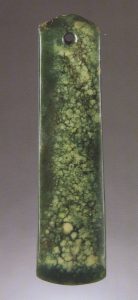
Other examples were Hawaiian bowls, traditionally very important family heirlooms. One showed a manufactured Cook’s voyage Leverian Museum provenance that exhibits “butterfly” repairs, which did not exist in Hawaii prior to 1820. He then showed an 18th century bowl purchased in 1986 at Christie’s that had been misidentified as an English milk bowl.
Mark then discussed the hei tiki of New Zealand, made of pounamu or greenstone (Maori jade is harder than iron), and is usually worn as a pendant around the neck. These tikis date back to the 14th and 15th centuries (see photos). The darker green tiki was purchased recently from an OAS member dealer. The large green tiki was purchased as an investment by the British Railway Fund and resold many times. A similar example collected in 1795 by Matthew Flinders is now housed in the Auckland Museum.
The tiki made from inanga stone or “white bait” jade, has red sealing wax instead of paua shell for the eyes, and was owned by the famous artist and collector Sir Jacob Epstein. Following was a spectacular venerated adze pounamu pendant, the green and white mottled stone named after a type of pigeon found on the South Island.
Mark Blackburn was an adventurer from an early age. He built a replica of Thor Heyerdahl’s Kon Tiki raft in his backyard before he was 10 years old. In December 2015, he helped organize the official Explorers Club flag expedition #53 – “an ethnographic survey of the Lau Islands” – with fellow explorers Ed Roski, Peter Keller of the Bowers Museum, and Leslie Martin. There are 60 islands in the Lau group with approximately 10,000 inhabitants. They brought kava as gifts for the various island chiefs on each island. One stop was Mago Island owned by Mel Gibson, bought from the Japanese for $15 million and made fully self-sustainable – with farming, logging and oysters. They were shown a box of Lapita pottery pieces found there.
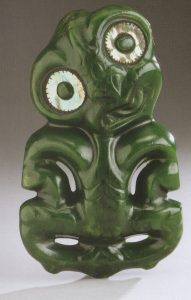
At Lakemba Island, the explorers presented kava to the chief (See photo) and were very impressed by his large kava bowl – which, Mark bemoaned, was not for sale. They discussed with the chief the climate crisis of the islands affecting their coastlines, also the dead reefs being the result of bleaching and the use of dynamite in fishing. They visited Kabara Island, where most kava bowls and tapa cloth are made and where the langi stone platform remains are still mostly intact. The last island had an important sacred cave connected to many Fijian and Tongan myths. Tabua, large whales teeth, used as high prestige items, were visible everywhere in the chief’s houses. There are many Lapita sites on the islands that, Mark feels, would merit further anthropological and archaeological study.
Mark was executive producer in the first feature Chinese film shot in Hawaii. His new company, Hawaii Film Challenge, is now calling for scripts from around the world for a film competition scheduled for September 2017, which will include indigenous story-telling with ten teams being selected and brought to Hawaii with all expenses paid.
In closing, Mark touched on the mismanagement problems of Hawaii’s Bishop Museum, which houses a large collection of Hawaiian artefacts, royal family heirlooms, documents and old photographs. He is outspoken against its poor current structure, which resulted in the once-in-a-lifetime Hawaiian feather-work show, Na Hulu Ali’I, being cancelled in favour of a pop culture show on candy – at a time when diabetes is rampant among Pacific Island peoples. Mark hopes for a better (perhaps an OAS) CEO to take charge.
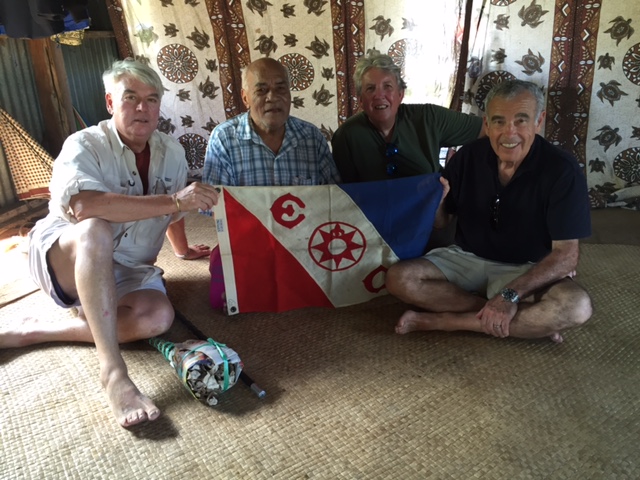
Lastly Mark handed out cards introducing ATADA – an International Organization Honoring the Artistic Vision of Indigenous People – composed of dealers and collectors worldwide, featuring an online market-place, a calendar of international tribal art exhibitions and events, and discussions on legal aspects like theft (including the 2003 theft of prehistory stone objects from the PNG National Museum), fakes and copies. Although ATADA is based in America, the principles are universal and the excellent website is definitely worth perusing. See it all online at: www.atada.com/

